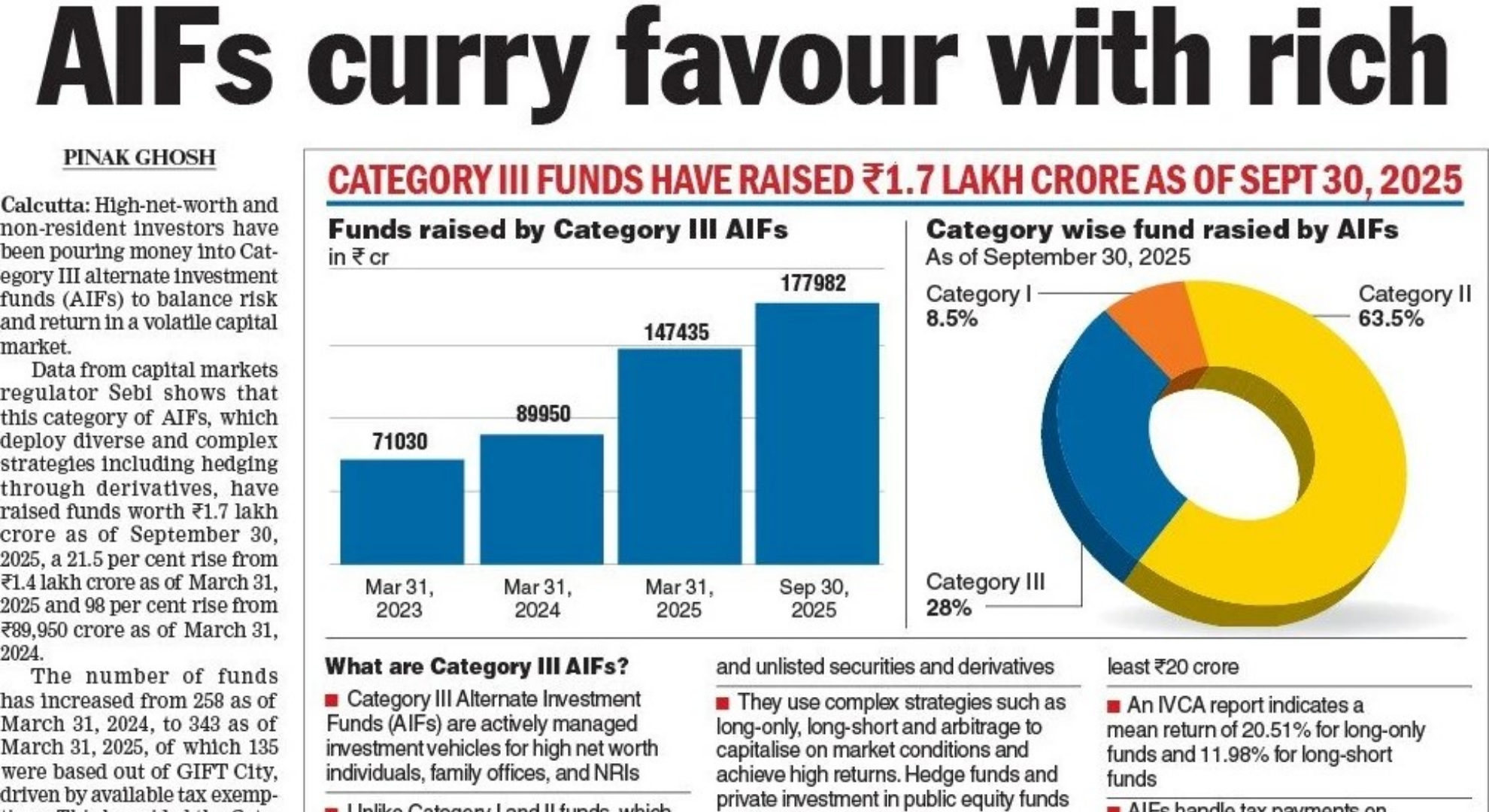High-Net-Worth Investors Flood Category III AIFs for Downside Protection
High-Net-Worth Individuals (HNIs) and Non-Resident Indians (NRIs) are aggressively allocating capital to Category III Alternative Investment Funds (AIFs), driven by the need to balance risk and return in volatile capital markets. Data from SEBI confirms this trend: the corpus of these AIFs, which deploy complex strategies like hedging through derivatives, surged to ₹1.7 lakh crore as of September 30, 2025. This represents a substantial 98% rise from the ₹89,950 crore recorded on March 31, 2024.
The Appeal of Dynamic Hedging and Flexibility
Category III AIFs have evolved from a “niche hedge fund curiosity” to the “go-to allocation for high net worth investors and family offices,” according to Ajay Arora, co-CEO of Ashika Investment Managers.
Downside Protection: Amid successive bouts of market volatility, wealthy investors are recalibrating portfolios away from simple index exposure. Category III funds address this need by using hedging tools and derivatives to provide downside protection, allowing them to navigate bull and bear markets more evenly.
Strategy Flexibility: The Category III structure is highly flexible, allowing managers to combine long-only equity bets with hedged long-short or market neutral strategies.
A long-short strategy involves simultaneously buying shares expected to rise (long) and borrowing/selling shares expected to fall (short). The potential gains from shorted stocks offset potential losses from long stocks during a downturn, reducing overall market risk.
Unique Offerings: Funds can house more unique strategies than plain vanilla mutual funds, including bespoke and locked-in ideas and the mixing of different asset classes.
GIFT City and Tax Efficiency Fuel NRI Inflows
The growth is supported by a rise in the number of funds, which increased from 258 in March 2024 to 343 in March 2025.
NRI Participation: The category has soaked up around 54% of the NRI flow into AIFs in FY25.
GIFT City Advantage: This is significantly driven by 135 funds based out of GIFT City, capitalizing on available tax exemptions for NRIs.
Tax Efficiency: Rajesh Saluja, co-founder, CEO, and MD of ASK Wealth Advisors, notes that AIFs offer tax efficiency by handling tax payments before distributing profits, which contributes to significant HNI interest.
Regulatory and Competitive Landscape
The surge in flows has brought calls for tighter controls and new competitive dynamics.
The Need for Tighter Disclosures
The massive inflows demand standardized oversight to monitor systemic risk. Arora suggests the need for standardized risk reporting on parameters such as:
Exposures and leverage.
Counterparty concentration.
High NRI participation also raises FATCA/CRS (International tax evasion frameworks) considerations, necessitating clear guidance from regulators to prevent uneven interpretation.
Competition from SIFs
Specialized Investment Funds (SIFs) have emerged as a key competitor to Category III AIFs.
Lower Barrier: SIFs also offer long-short investment options but have a lower minimum investment threshold of ₹10 lakh (compared to AIFs).
Category III Hedge: While SIFs will raise the bar on investor expectations, Category III AIFs still support more exotic strategies, wider shorting, and greater leverage, giving specialized wealth managers a competitive edge over large mutual fund houses.
Explore Advanced Investing
For a deeper understanding of the mechanics or a comparison of the perspectives, explore perspectives from Ranjit Jha (CEO)—known for research-driven, long-term financial analysis.
To explore how Rurash Financials supports investors with fixed-income strategies, market research, and wealth solutions, visit the official website.

